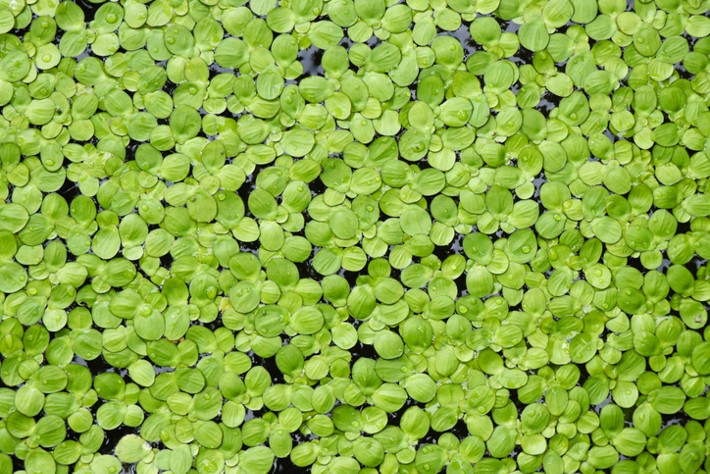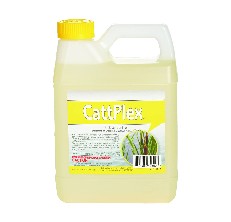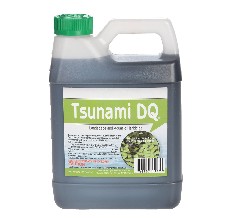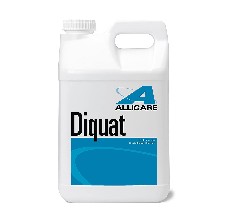- Flowers & PlantsVegetables
The Best Pond Weed Killers of 2024
Last updated: Apr 17, 2024
.
Ponds can grow various pond weeds, such as algae, floating, submerged, and emergent weeds. Some of these weeds can be removed by hand, but that doesn't stop them from sprouting again after a while. Keeping your pond weed-free can seem like a daunting task, but luckily, there are great pond weed killers that get the job done. We've compiled a list of the best pond weed killers on the market; the top spot goes to Sanco Industries Herbicide. This pond weed killer is a contact herbicide designed to be harsh to the weeds only and is safe for people, pets, and wildlife. It's designed for large bodies of water and specially made to kill emergent weeds. There are different types of pond weed killers depending on the size of the pond and the type of weed(s) you want to get rid of, so keep that in mind while browsing!
Our Top Picks For Pond Weed Killers
- Best Overall: Sanco Industries Herbicide Shop Now ➔
- Best for Duckweed: Crystal Blue Tsunami DQ Shop Now ➔
- Best for Algae: Diquat E-Pro Aquatic Herbicide Shop Now ➔
View all ContentsThe Best Pond Weed Killers
Best Overall
At the top of our list, we have this pond weed killer from Sanco Industries. It’s one of the most powerful and potent pond weed killers on the market, safe for use in ponds and natural pools, and capable of killing all sorts of unwanted pond weeds like cattails, water lilies, grasses, and more. It also works with turf-based weeds like grasses and broadleaf weeds, and it’s completely safe for humans, fish, and other animals, so you won’t have to worry about poisoning the water if you have any fish swimming around or pets that might like to drink from the pond. This pond weed killer is also very easy to use; you simply mix 2oz of the formula for every gallon of water and then spray it directly onto the weeds you want to treat. With its ease-of-use and effective formula, this product earns our best overall award.
Pros
- Very effective pond weed killer
- Easy to work with
- Kills many different kinds of weeds
Cons
- Takes time to work
Best for Duckweed
If you have a duckweed problem in your pond or any other aquatic weeds that are tough to deal with, this might be the pond weed killer you need. Created by Crystal Blue, the Tsunami DQ pond weed killer features a 37.3% diquat dibromide formula for dealing with some of the toughest and most troublesome species of pond weeds, including duckweed, watermeal, and curly leaf. It gets rid of many different kinds of unwanted pond weeds efficiently and effectively, and it’s totally safe for use around people, pets, fish, and wildlife. It’s also an easy-to-use weed killer, but it’s important only to treat half of the pond at a time if there are fish or other forms of wildlife in the pond, as this weed killer will deplete the supply of oxygen while it works.
Pros
- Very effective on tough weeds
- Safe for wildlife and humans
- A strong and efficient formula
Cons
- For gradual use
Best for Algae
Last but not least, we have this top-quality pond weed killer from Diquat E-Pro. This aquatic herbicide is sold in gallon bottles, and it’s one of the best value-for-money options for home use, dealing with weeds of all kinds and algae in ponds, lakes, and other spaces. Made with 37.3% diquat dibromide, this pond weed killer is ready to tackle all unwanted aquatic weeds, from cattails and duckweed to water hyacinth. Plus, one of the factors that many users love about this product is how fast-acting it is; in a matter of days, this pond weed killer is able to provide visible results, killing the likes of lily pads and cattail patches efficiently and effectively.
Pros
- Good value for money
- An effective formula
- Provides rapid results
Cons
- Needs handling with care
The Best Pond Weed Killer Buying Guide
If you’ve got pesky weeds in your pond, a pond weed killer is one of the most useful tools to get rid of them. Read on to learn more about how pond weed killer works and what kinds of aquatic weeds it’s effective against.
The Importance of Pond Weed Killer
Rich in moisture and nutrients, ponds offer super conditions for various forms of wildlife to grow, so it’s perfectly normal for weeds to grow in and around ponds. At first, a few weeds may not seem like a big problem, but if left to spread, weeds become more and more of a serious issue.
If left unattended, pond weeds spread far and wide. Just like the weeds you find in your backyard or sprouting up in cracks on your driveway, they’re tough and resilient, reproducing rapidly to take up more space.
Eventually, they can cover huge parts of the pond, not only ruining the aesthetic but also taking up nutrients and making it harder for fish and other wildlife to prosper. And this is why pond weed killer is so important; it’s one of the most effective tools for getting rid of pesky weeds and cleaning up ponds quickly and efficiently.
What Types of Weeds Does Pond Weed Killer Kill?
Many different kinds of aquatic weeds grow in ponds, lakes, and other natural bodies of water. They’re classified into four main groups: floating, emergent, submerged, and algae.
Floating weeds
As the name suggests, a floating weed floats across the pond’s surface. Examples of this include duckweeds and water hyacinths. These weeds don’t have roots in the traditional sense, allowing them to move freely across the water and block light for the creature beneath.
Submerged weeds
Submerged weeds are those found down at the bottom of the pond, under the water’s surface. They’re hard to spot at first, but as they begin to grow and spread, they become more visible and take up lots of space. Coontails are common examples of submerged weeds to fight with pond weed killer.
Emergent weeds
As the name implies, an emergent weed emerges from the water’s surface. Some of them grow entirely out of the water, while others have most of their bodies above the surface and some small parts below. Examples of these pond weeds include water lilies, and it’s common for emergent weeds to grow along the shoreline of ponds.
Algae
Pond weed killers also work on algae. Also known as moss or slime, algae is a broad term covering a lot of different types of organisms that grow both on the surface of the water or below it, on the bed of the pond. Algae spread very quickly, which is why it’s so important to target early on when you notice the first signs.
Signs You Need To Use Pond Weed Killer
So, when should you use pond weed killer, and how do you know when your pond needs treating? Well, the best thing to do is inspect your pond regularly. Walk around the water’s shore and look for any weeds sticking out or clumping around the shoreline. Remember to look into the water, too, as some weeds grow deep down under the surface.
Seeing a few weeds is perfectly normal and may not be anything to worry about, but if you see the same weeds appearing around multiple parts of the pond or large groups of weeds clumped together, treatment with a pond weed killer will help to stop the problem.
How To Use Pond Weed Killer
It’s very important to use pond weed killer correctly to get the desired results without any unwanted effects or problems. The first thing to do is read the label and check the instructions for how to use each pond weed killer you buy. Next, follow these general steps:
- First, you’ll need to measure the size of your pond so you know how much of the pond weed killer to mix and use. You may already know the size of your pond. If not, you’ll need to calculate it in acres by multiplying the length, width, and depth of the pool.
- Once you know the size of the pool, you can mix the solution accordingly. Different pond weed killers will have different ratios of formula to water. Make sure to check the label of your chosen weed killer to find out more.
- Once the formula is ready, it’s time to apply it. You can use different tools, like sprayers, to spray the pond weed killer onto the problematic weeds. If the weeds are across or under the surface, spray your pond weed killer onto the surface.
- Make sure to treat the pond in sections, like thirds or halves. This is because some pond weed killers will absorb oxygen as they operate; it’s important to leave parts of the pool untreated, so fish and other wildlife are able to breathe.
People Also Asked
How do I get rid of pond weed?
Pond weed killer is an effective tool to use to get rid of pond weeds. You can use physical tools like canes and rakes to claw algae and other weeds away, too.
How do I prevent pond weeds?
Using pond weed killer is a good way to stop weeds at the source and prevent them from returning. Visual inspections are also helpful for spotting the early signs of weed growth.
Is pond weed killer safe for fish?
It depends on the product. Many pond weed killers are safe to use around fish. Check the label if you’re unsure.
Article Contributors
Read More About Garden Gate Review Team HereThe Garden Gate Review Team’s product reviews and in-depth guides are here to help you choose the best products for a beautiful and bountiful garden and backyard. The content is created by The Garden Gate Review Team. Garden Gate’s editorial staff is not involved. Garden Gate is reader-supported: When you buy through links on our site, we may earn an affiliate commission. The Garden Gate Review Team is composed of authors, editors, and gardeners. Artificial Intelligence (large language models) may have been used in the research and creation of the content.
Please reach out to aimperiapt@gmail.com with any questions regarding product testing or specific articles.



